Many developers of property in South Carolina are applauding the recent extension of tax credits available for the rehabilitation of abandoned properties under the South Carolina Abandoned Buildings Revitalization Act (S.C. Code Section 12-67-100, et seq.) to December 31, 2035. The Act was set to expire at the end of 2025. This is also great news for counties and municipalities across the state suffering from the decreased property values, exodus of residents, and increases in crime associated with abandoned buildings, as private investment will continue to be incentivized.
For those with no or limited familiarity with these tax credit incentives, here is a primer:
The Benefit
The credit available under the Act can be towards income or property taxes, in either case resulting in significant benefits to the taxpayer. Where the income tax credit is sought, it can amount to as much as 25% of qualified rehabilitation expenses, with a cap of $700,000 (increased in 2024 from a cap of $500,000). The credit is earned in the tax year that the building site is placed in service (the date the building site is completed and ready for its intended use) and is taken in equal installments over 5 years. Any unused credit can be carried forward for 5 years. Where the property tax credit is sought, it can amount to up to 75% of the real property taxes due on the building site for each year up to 8 years, with no cap.
Qualification
Whether seeking the income or property tax credit, to qualify, the taxpayer must redevelop a building which is “abandoned,” as defined in the Act. (The building site may also include multiple buildings, or subdivided units or parcels as noted below, but for simplicity we will assume only one unsubdivided building.) The building must have been continuously closed to business or nonoperational for income producing purposes for at least 5 years prior to the filing of the Notice of Intent to Rehabilitate. (More on that below.) A “building site” includes the land upon which the building is located, as well as that immediately surrounding the building used for parking and other similar purposes, if they were directly related to the building’s income producing use, along with other improvements thereon.
An exception is made for properties included on the National Association of Historic Places list. Those used solely for storage or warehouse purposes are still considered nonoperational for purposes of determining abandonment.
For certainty as to whether the building qualifies as abandoned, the taxpayer may apply to the municipality or county where the building site is located for a certification by the governing body. This is often a first step as the certification allows the developer to conclusively rely on the determination, so long as the certification is filed along with the taxpayer’s first tax return when the credit is claimed. The certification may be accomplished, at the governing body’s discretion, by ordinance (requiring three readings and a public hearing), or by resolution (requiring only one reading).
Further, the taxpayer must incur rehabilitation expenses exceeding $75,000, $150,000 or $250,000 depending on the population of the municipality or unincorporated area of the county where the building site is located, as follows:

Only buildings put into operation for income producing purposes qualify for the credit, except in the case of construction or operation of a charter school, private school, or other similar institution, if such construction or operation meets the purposes of the Act. A building with an immediately preceding use as a single family residence does not qualify, nor does a building constructed or renovated for use as a single family residence. Further, where the building site was owned by the same taxpayer when it is operational or immediately prior to its abandonment, the building does not qualify.
Qualified Expenses
Rehabilitation expenses are those incurred in the rehabilitation, demolition, renovation or redevelopment of the building site, except that demolition expenses only qualify if the building site is redeveloped. Costs of acquiring the building site, including the purchase price, do not qualify nor do expenses associated with the increase in square footage of the building more than double its original square footage. Professional fees associated with redevelopment of the site, such as engineering and architectural fees, do qualify, as do interest costs on a construction loan. Note that expenses are considered “incurred” under the accrual method of accounting, regardless of the method of accounting used by the taxpayer.
Income Tax Credit Option
When seeking the available income tax credit, the taxpayer should submit a Notice of Intent to Rehabilitate to the South Carolina Department of Revenue (a letter including the estimated rehabilitation expenses along with other information required by the Act) before incurring any rehabilitation expenses on the site. Failure to do so results in qualification of those rehabilitation expenses incurred after the Notice of Intent is provided. Determining the estimated expenses to include is key. If the estimation is less than 80% of what the actual expenses end up being, no credit is allowed. If the estimation is more than 125% of the actual expenses, the tax credit is capped at 25% of the 125% of the estimated expenses amount. The income tax credit may not exceed $500,000 for each abandoned building site. It is taken in equal installments over 3 years (or 5 years for credits earned prior to June 9, 2015) beginning with the tax year that the building site (or phase) is placed in service. Any unused credit may be carried forward for 5 years.
Property Tax Credit Option
The approval and credit provisions differ where the taxpayer seeks the property tax credit, which can be up to 75% of the real property taxes due on the building site each year for up to 8 years. In that instance, the Notice of Intent should be filed with the municipality or county where the building site is in an unincorporated area therein, and the rehabilitation must be approved by a majority vote of the local governing body. If the body determines that the site and expenses are eligible for the credit, there must been be a public hearing and approval by ordinance. The property tax credit may be taken against up to 75% of the real property taxes due on the building site each year for up to 8 years, without limitation on the amount of the credit.
Notice of Intent to Rehabilitate
The Notice of Intent to Rehabilitate is a letter from the taxpayer filed with the South Carolina Department of Revenue, where the income tax credit is sought, or the county or municipality where the abandoned building is located, where the property tax credit is sought. It must include (a) a statement of the taxpayer’s intent to rehabilitate the building site, (b) its location, (c) whether new construction is involved, (d) the amount of acreage in the building site, (e) the amount of square footage of existing buildings on the site, (f) the building or buildings that the taxpayer intends to renovate, and the estimated rehabilitation expenses. The estimated expenses should contain a specific dollar amount, not a range. The Notice should be filed before any rehabilitation expenses are incurred at the building site. Failure to do so results in only those expenses incurred after the Notice of Intent qualifying. All previous expenses will not qualify. The Notice of Intent cannot be amended to revise the rehabilitation expense estimate or otherwise. Also, a taxpayer may not file a “protective” Notice of Intent with both the SCDOR and the county or municipality where the building site is located while deciding whether to seek the income or property tax credit. This decision must be made on the front end. The “taxpayer” filing the Notice of Intent may be the owner of the building, the developer, one or more lessees, or a pass-through entity, as long as it is the person or entity which both incurs the rehabilitation expenses and places the site in to service.
Subdivision
Abandoned buildings and sites may be subdivided into separate parcels or units in which case, at the taxpayer’s option, each unit or parcel is deemed to be an abandoned building site for purposes of determining whether each subdivided parcel is abandoned. In the case of a subdivision of units, if there is a question as to whether the units are truly separate such cases are considered based on certain factors including, without limitation, the operational use or line of business of each separate unit, the economic activity of each separate unit, and the structural components of each separate unit (e.g., separate firewalls, entrances, HVAC systems, etc.). It is important to note that each separate unit or parcel must meet the minimum rehabilitation expenses thresholds provided above, and requires the filing of its own separate Notice of Intent.






